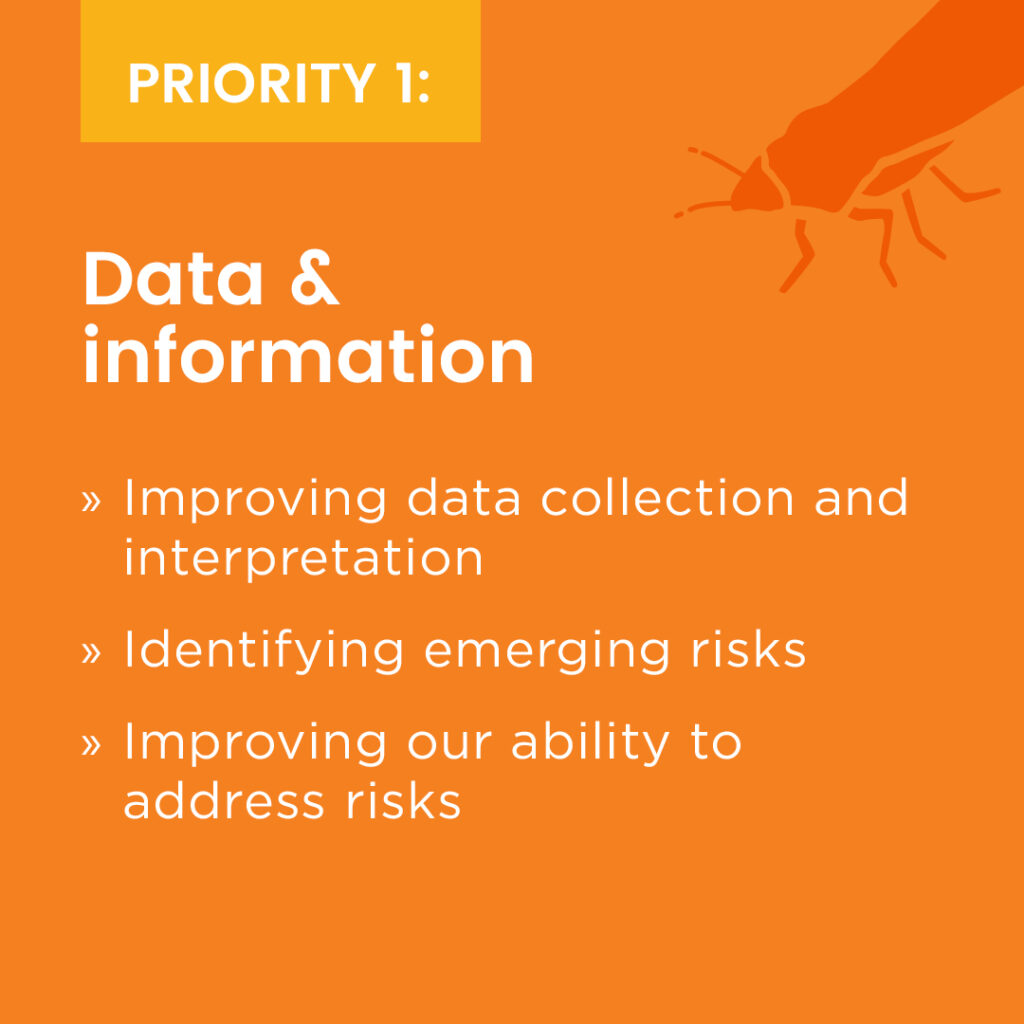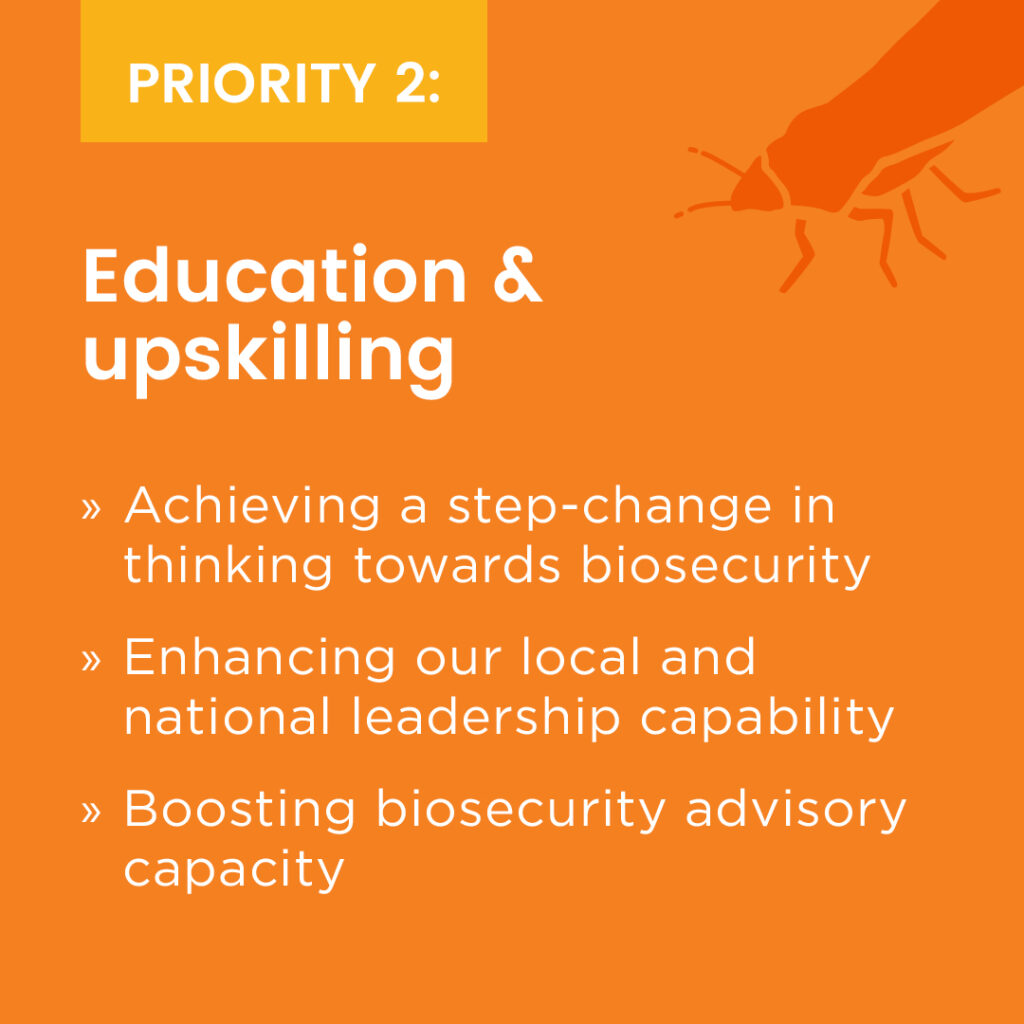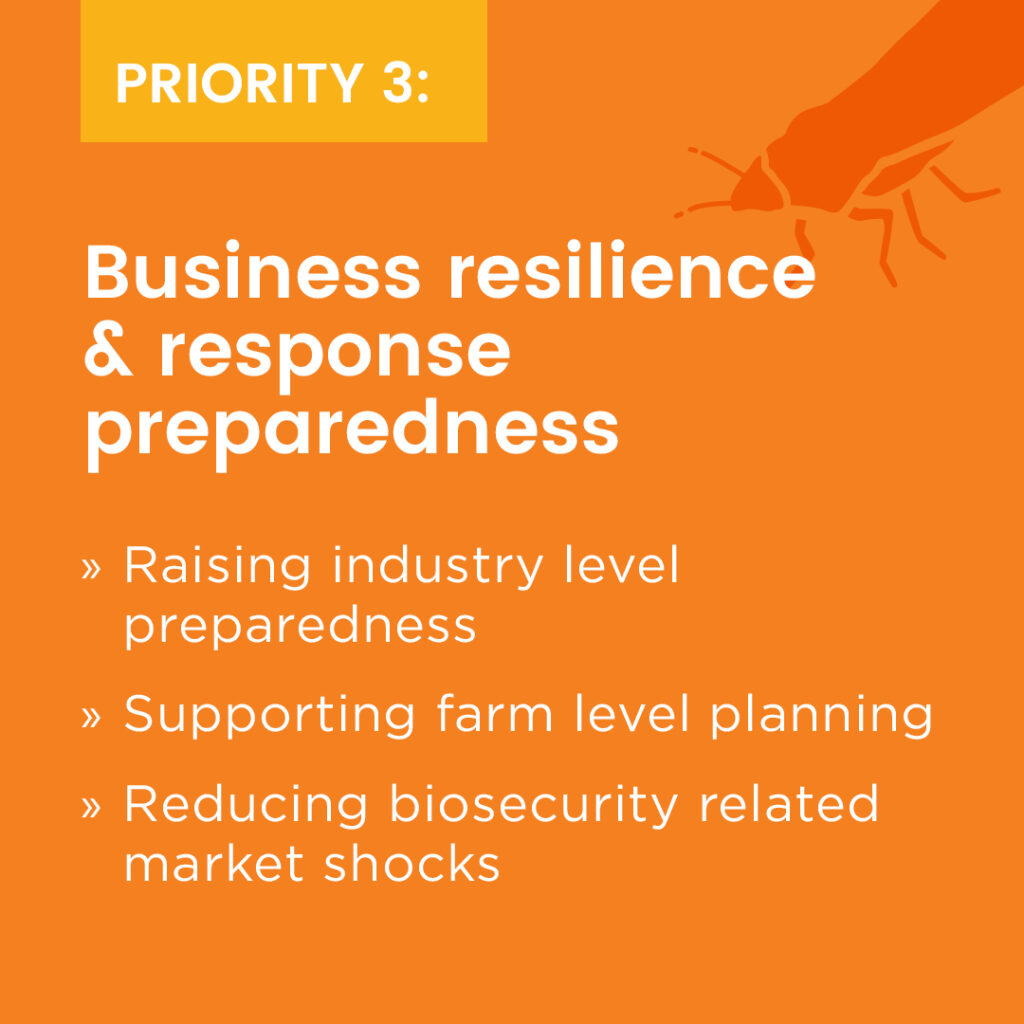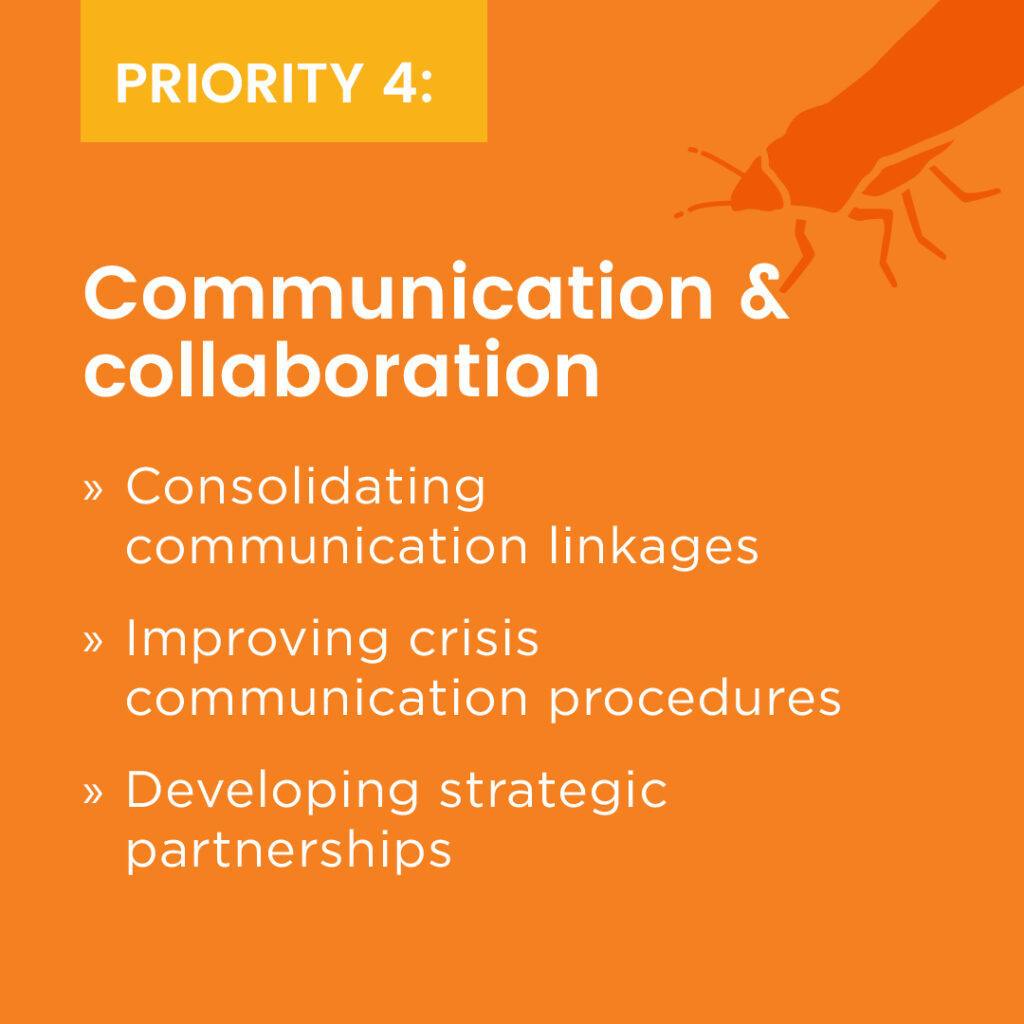Strategy overview
The Australian citrus industry has a sizable production base that requires protection from exotic pests and diseases. The Australian citrus industry has previously integrated biosecurity priorities into broader strategies, such as the Citrus Australia Three Year Strategic Plan (2020-2022) and the various industry R&D investment plans overseen by Hort Innovation.
There are numerous current research, development and business activities that support better biosecurity for the citrus industry, and Australian agriculture more broadly. In turn, there are many additional activities that could be undertaken to further improve the preparedness of Australian citrus against the threat of exotic pests and pathogens.
This strategy represents the first nation-wide plan for guiding biosecurity activities for the improvement of Australian citrus industry resilience. It describes a vision for the industry: A culture of awareness and preparedness for a resilient citrus industry. To achieve the vision, the strategy contains four priorities and 16 activity areas to guide efforts from 2023-2028.
Development of the Strategy
In June 2022, Citrus Australia began development of a national biosecurity strategy for the citrus industry (the Strategy). The development of this strategy fills a gap in relation to identification and prioritisation of biosecurity preparedness activities and capturing linkages between current and future activities. The strategy was developed in consultation with the industry, including the Citrus Pest and Disease Prevention Committee (CPDPC) and was endorsed by the Citrus Australia Board in December 2022.
Execution of the Strategy
The Strategy is underpinned by a detailed Implementation Plan. Development of the Implementation Plan involved several face-to-face and working group meetings with Plant Health Australia and the CPDPC. It expands on strategy priorities and aims to guide activities during each year of the strategy. Outputs identified in the implementation plan will enable tracking of activity area progress against the strategy.
The Implementation Plan is structured as follows: Priority>activity area > activity > output > outcome > current activities > timeframe > priority rank > implementation timeframe (note: those elements reflected in the Strategy are bolded).
You are not logged in
If you are not already a member, please show your support and join Citrus Australia today. Collectively we can make big things happen.




